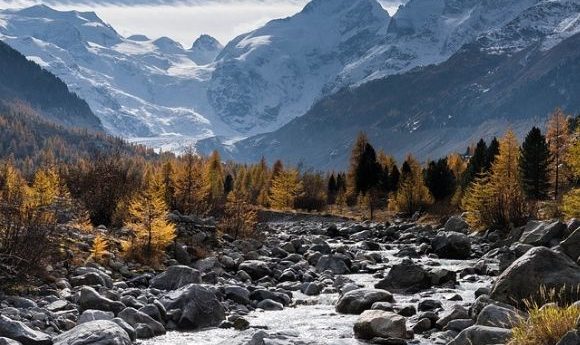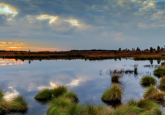Dahurian larch: the rise before the fall?

An observed rise in the growth of Dahurian larch, the most northern species of tree, could prophesize a more sinister future for the species.
When oversimplified, global warming can occasionally seem to bear a few advantages, the recent increase in the average temperature of summers in the UK over the last 10 years has led few to complain. However, only a very small amount of further investigation reveals the overwhelmingly negative impacts of the phenomenon; the threat to the UK of rising sea levels, for instance, is a clear counterpoint.
One such instance of this has been demonstrated by researchers from Shenyang Agricultural University (China), led by Xianliang Zhang, who have studied the growth of Dahurian larch in the boreal forests (Taiga) of Northern China. The research team has found that the increase in soil temperature may have led to an increase in the tree’s growth.
“If the larch forest retreat in this region in the future, it is also not a good sign for the whole boreal forest”
Dahurian larch typically grow rapidly over the first 150 years and then slow their growth until 300 years old, at which point they tend to stop growing altogether. They grow slowly as they have to be supported in the thin layer of soil above the permafrost on which they sit. Each year of growth adds a new growth ring to the tree, with the width of each ring indicating how much the tree grew in each year.
Zhang and his team set out to study the world’s most cold resistant and northern-most tree species by measuring the width of growth rings from 400 trees of different ages. These growth rates were then compared to climate data from the last 50 years, including soil temperature and precipitation.
-
Mapping the course of climate change
-
Prehistoric mega-herbivore decline: a case of climate not primate
-
We could be facing a Christmas tree crisis
This study revealed that between 2005-2014, trees grew faster than in the 40 years prior to 2005. The effect was especially pronounced in trees older than 300 years, who grew 80% more in the 2005-2014 time period. Trees between 250–300 years old experienced a 35% boost, with trees younger than 250 displaying a 11-13% growth increase.
A strong positive correlation with soil temperature and increase in growth was observed. This suggests that as the soil temperatures rise, the permafrost decreases, leading to more available soil for the trees to spread their roots into to collect more nutrients.
While this initial increase in growth is beneficial in the short term, it portends to some worrying potential implications for the boreal forest. The thawing of permafrost in other areas has led to the formation of swamps and wetlands that Dahurian larch would not be able to survive in. The exit of Dahurian larch from these northern forests, of which they compose a large portion of the flora, could be catastrophic for the ecosystems based around them. “If the larch forest retreat in this region in the future, it is also not a good sign for the whole boreal forest,” forewarned Zhang.





